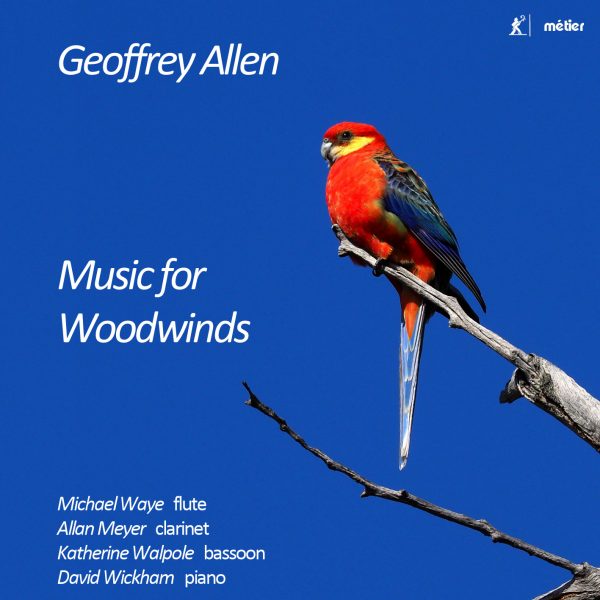Infodad
Geoffrey Allen (born 1927) is one of many modern composers looking for ways to take the bassoon beyond the “clown of the orchestra” role with which it was saddled for many years after it had been used for its serious virtuoso capabilities by composers from Vivaldi to Mozart. Allen’s 1964 Sonata for bassoon and piano, Op. 9, is actually as interesting for its complex piano part as for its bassoon elements, which are comparatively straightforward mid-20th-century in sound. This is one of three bassoon-focused chamber works on a very well-played new Métier recording, and it is the earliest by far. The Pastorale and Sonatina both date to 1998 and are Nos. 1 and 2 of Allen’s Op. 34.
These are not intended as particularly virtuosic works – they were written in response to a call for music suitable for high-school or slightly more-advanced performers – but both have a pleasant sound about them, and in fact both partake of pastoral elements. There is gentle rocking motion throughout the brief Pastorale, while the Sonatina has a similar first-movement texture, followed by an expressive but not overdone Adagietto and a finale whose light bounciness brings the bassoon closest to a bright and slightly comical role, albeit not without expressive passages that show the instrument’s lyrical capabilities.
The bassoon-and-piano works are combined on this CD with other essays in modern wind writing by Allen. Outback Sketches, Op. 58 (2004-05) includes three impressions of Australia, where Allen, who is from Great Britain, lived for a decade and thereafter continued working through a series of appointments and projects. The three movements of this impressionistic work for clarinet and piano are Aubade, Desert Noon, and Bush Sundown. The first is soft and gentle, giving the clarinet plenty of opportunities for expressiveness. The second offers the most-effective tone painting, with a spare and dry, often piercing sound reflective of the aridity of a great deal of Australia: the whole center of the country is desert. The finale features stillness of a different, warmer kind. The whole work is slow-to-moderate in pace, giving the impression of torpidity and a kind of placid acceptance of a harsh environment.
The four-movement Fantasy Trio, Op. 70 (2007) is considerably more varied. The first movement’s sensibility is close to that of the Outback Sketches, but the second is a good deal more lively, and the interplay between the two winds is handled effectively – with the piano cementing their relationship. The third movement is interestingly marked Andante di sogno, and dreamlike it is – spun out at some length, with the two wind instruments mainly going in different directions but both reflecting a kind of gently contemplative world. The finale is the most colorful and rhythmically varied movement, encompassing moods from the rhapsodic to the mildly martial, and giving the winds more chances to intermingle than they have had through much of the piece.
The performers are very fine throughout this well-made recording, which contains no truly outstanding music – there is a faint, persistent feeling of having heard material much like this before – but which provides an interesting chance to hear an accomplished composer’s way of handling woodwinds in a modern chamber-music context.
@divineartrecordingsgroup
A First Inversion Company
Registered Office:
176-178 Pontefract Road, Cudworth, Barnsley S72 8BE
+44 1226 596703
Fort Worth, TX 76110
+1.682.233.4978












